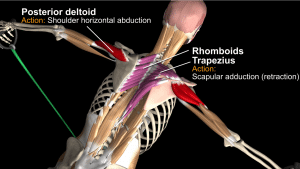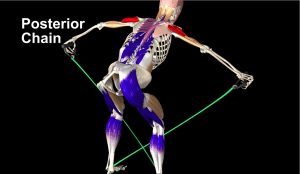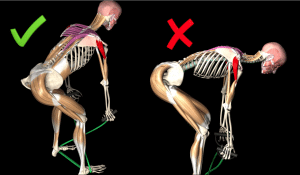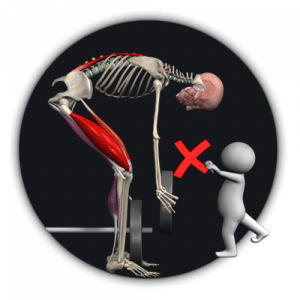Bent Over High Row with a Resistance Band
A great shoulder exercise that will also activate your back muscles
Strengthening the shoulders is a great goal for every workout.
In our daily life, our shoulders are in constant use, whether it’s pulling, pushing, lifting up the arm, lifting weight, and more.
While the shoulder muscles are very active throughout the day, the shoulder joint is pretty vulnerable as a result of its structure. Its large mobility and range enables freedom of movement but also make it more prone to injury.
That’s another reason to strengthen the shoulder muscles, to help the joint be stable and healthy.
The Bent Over High Row (also known as ‘Bent-Over Lateral raise’ or ‘Rear Delt Raise’) is a great shoulder exercise targeting the Posterior Deltoid and combines some back activation with the Erector Spinae.
What’s the right way to perform this exercise?
➔ Stand with your feet hip-width apart holding both ends of the resistance band.
➔ Bend at your waist (through the hip joint – hip hinge) and slightly bend your knees.
➔ With your core tight and straight back, raise the resistance band until your elbows are in line with your shoulders.
Anatomical Analysis
The target muscle is the Posterior Deltoid (colored red).
The Trapezius and Rhomboids (colored pink) adduct the scapula.
This functional exercise not only strengthens the Posterior Deltoid, but it also brings the core muscles into play with an emphasis on all the posterior chain muscles.

The posterior chain is comprised of the muscles on the back side of your body.
Its primary muscles include the following: Erector Spinae, Gluteus maximus, Hamstrings, and Gastrocnemius.
The posterior chain muscles frequently activate in our daily activities such as standing up, jumping, picking up, and more.
A strong posterior chain will help reduce the risk of injury, as long as there’s a balance between the posterior and anterior chains.

One mistake you should avoid in this exercise
A common mistake that we often see in this exercise is Spinal flexion and extension, which means creating movement in the spine as compensation for weakness or due to lack of awareness.
It is important to keep your back straight during the entire exercise and maintain the same angle at the hip throughout the exercise.

Experience backed by knowledge will upgrade your training and coaching.
Having the knowledge will help you get faster results, reduce injury, and in the bottom line, become an expert in what you do.
Download Muscle and Motion’s Strength Training app FOR FREE to increase your knowledge, made especially for fitness professionals!
Target Muscles
➔ Posterior Deltoid
➔ Gluteus Maximus
➔ Erector Spinae
Synergists
➔ Trapezius
➔ Rhomboids
Stabilizers
➔ Triceps Brachii
➔ Erector Spinae
➔ Abdominal muscles
➔ Pelvic Diaphragm (male)
➔ Diaphragm
➔ Gluteus Maximus
➔ Hamstrings



